《游褒禅山记》原文

褒禅山亦谓之华山。唐浮图慧褒始舍于其址,而卒葬之;以故其后名之曰“褒禅”。今所谓慧空禅院者,褒之庐冢也。距其院东五里,所谓华山洞者,以其乃华山之阳名之也。距洞百余步,有碑仆道,其文漫灭,独其为文犹可识,曰“花山”。今言“华”如“华实”之“华”者,盖音谬也。
其下平旷,有泉侧出,而记游者甚众,所谓前洞也。由山以上五六里,有穴窈然,入之甚寒,问其深,则其好游者不能穷也,谓之后洞。余与四人拥火以入,入之愈深,其进愈难,而其见愈奇。有怠而欲出者,曰:“不出,火且尽。”遂与之俱出。盖余所至,比好游者尚不能十一,然视其左右,来而记之者已少。盖其又深,则其至又加少矣。方是时,予之力尚足以入,火尚足以明也。既其出,则或咎其欲出者,而余亦悔其随之而不得极夫游之乐也。
于是余有叹焉。古人之观于天地、山川、草木、虫鱼、鸟兽,往往有得,以其求思之深而无不在也。夫夷以近,则游者众;险以远,则至者少。而世之奇伟、瑰怪,非常之观,常在于险远,而人之所罕至焉,故非有志者不能至也。有志矣,不随以止也,然力不足者,亦不能至也。有志与力,而又不随以怠,至于幽暗昏惑而无物以相之,亦不能至也。然力足以至焉,于人为可讥,而在己为有悔;尽吾志也而不能至者,可以无悔矣,其孰能讥之乎?此余之所得也。
余于仆碑,又以悲夫古书之不存,后世之谬其传而莫能名者,何可胜道也哉!此所以学者不可以不深思而慎取之也。
四人者:庐陵萧君圭君玉,长乐王回深父,余弟安国平父、安上纯父。至和元年七月某日,临川王某记。
中文翻译
褒禅山也称为华山。唐代和尚慧褒当初在这里筑室居住,死后又葬在那里;因为这个缘故,后人就称此山为褒禅山。现在人们所说的慧空禅院,就是慧褒和尚的墓舍。距离那禅院东边五里,是人们所说的华山洞,因为它在华山南面而这样命名。距离山洞一百多步,有一座石碑倒在路旁,上面的文字已被剥蚀、损坏近乎磨灭,只有从勉强能认得出的地方还可以辨识出“花山”的字样。现在将“华”读为“华实”的“华”,大概是(因字同而产生的)读音上的错误。
由此向下的那个山洞平坦而空阔,有一股山泉从旁边涌出,在这里游览、题记的人很多,(这就)叫做“前洞”。经由山路向上五六里,有个洞穴,一派幽深的样子,进去便(感到)寒气逼人,打问它的深度,就是那些喜欢游险的人也未能走到尽头——这是人们所说的“后洞”。我与四个人打着火把走进去,进去越深,前进越困难,而所见到的景象越奇妙。有个懈怠而想退出的伙伴说:“再不出去,火把就要熄灭了。”于是,只好都跟他退出来。我们走进去的深度,比起那些喜欢游险的人来,大概还不足十分之一,然而看看左右的石壁,来此而题记的人已经很少了。洞内更深的地方,大概来到的游人就更少了。当(决定从洞内退出)时,我的体力还足够前进,火把还能够继续照明。我们出洞以后,就有人埋怨那主张退出的人,我也后悔跟他出来,而未能极尽游洞的乐趣。
对于这件事我有所感慨。古人观察天地、山川、草木、虫鱼、鸟兽,往往有所得益,是因为他们探究、思考深邃而且广泛。平坦而又近的地方,前来游览的人便多;危险而又远的地方,前来游览的人便少。但是世上奇妙雄伟、珍异奇特、非同寻常的景观,常常在那险阻、僻远,少有人至的地方,所以,不是有意志的人是不能到达的。(虽然)有了志气,也不盲从别人而停止,但是体力不足的,也不能到达。有了志气与体力,也不盲从别人、有所懈怠,但到了那幽深昏暗而使人感到模糊迷惑的地方却没有必要的物件来支持,也不能到达。可是,力量足以达到目的(而未能达到),在别人(看来)是可以讥笑的,在自己来说也是有所悔恨的;尽了自己的主观努力而未能达到,便可以无所悔恨,这难道谁还能讥笑吗?这就是我这次游山的收获。
我对于那座倒地的石碑,又感叹古代刻写的文献未能存留,后世讹传而无人弄清其真相的事,哪能说得完呢?这就是学者不可不深入思考而谨慎地援用资料的缘故。
同游的四个人是:庐陵人萧君圭,字君玉;长乐人王回,字深父;我的弟弟王安国,字平父;王安上,字纯父。至和元年七月,临川人王安石记。
英文翻译
Mount Baochan is also known as Mount Hua. In the Tang Dynasty, a Buddhist monk named Hui Bao first settled at the foot of this mountain and was later buried here. For this reason, it was later named "Baochan Mountain". What is now called the Huikong Zen Monastery was originally the tomb and residence of Monk Hui Bao. About five li east of the monastery lies the so - called Huashan Cave, which was named after its location on the southern side of Mount Hua. A hundred steps or so from the cave, there lies a stone tablet lying across the path. The inscriptions on it have been almost completely worn away by time, and only the characters for "Huashan" can still be faintly recognized. It is likely a mispronunciation that the character "Hua" here is pronounced the same as in "hua shi" (fruit), which should actually be "hua" as in the name of the mountain.
The area below slopes gently and is open and flat. A spring gushes out from the side, and there are many visitors who come here to tour and inscribe their names. This place is called the "Front Cave". About five or six li up the mountain, there is a cave that is very deep and gloomy. Once you enter it, you will feel an intense chill. When asked about its depth, even those who are fond of adventurous travels cannot reach its end. This is what is called the "Back Cave". Accompanied by four people with torches, I entered the cave. The deeper we went, the more difficult it became to advance, but the more amazing the scenery we saw. One of our companions, feeling weary, wanted to leave, saying, "If we don't go out now, the torches will soon go out." So, we all followed him out. The distance we had gone into the cave was less than one - tenth of what those who love adventure could cover. However, looking at the walls on both sides, we found that there were already few people who had come and left inscriptions. In the deeper parts of the cave, even fewer visitors had arrived. When we decided to leave the cave, I still had enough strength to go further in, and the torches were still bright enough to light our way. After coming out of the cave, some people blamed the one who had suggested leaving. I also regretted following them and not being able to fully enjoy the pleasure of the tour.
I have some reflections on this matter. In ancient times, when scholars observed heaven, earth, mountains, rivers, plants, insects, fish, and birds, they often gained insights because they pursued their thoughts deeply and extensively. Places that are flat and close are visited by many tourists, while those that are dangerous and far away are visited by few. However, the world's most magnificent, strange, and extraordinary sights are often located in dangerous and remote places where few people venture. Therefore, only those with determination can reach them. Even if one has determination, one should not blindly follow others and stop. But if one lacks the physical strength, one will not be able to reach the destination either. With determination and strength, and without being negligent or discouraged, but lacking the necessary tools to support oneself in the dark and confusing places, one still cannot reach the goal. If one fails to reach the destination despite having sufficient strength, it may be a subject of ridicule in the eyes of others, and one will also have regrets in one's own heart. But if one has done one's best and still fails to reach the destination, one can be free from regrets. Who can then ridicule such a person? This is what I have learned from this mountain - climbing experience.
Regarding the fallen stone tablet, I also lament the fact that many ancient texts have been lost, and later generations have spread false information about them without being able to clarify the truth. How can all these things be fully described? This is why scholars must think deeply and be cautious when using historical materials.
The four people who accompanied me on this trip were: Xiao Junyu (styled Junyu) from Luling, Wang Hui (styled Shenfu) from Changle, my younger brother Wang Anguo (styled Pingfu), and Wang Anshang (styled Chunfu). Written on the seventh day of the seventh month in the first year of the Jiayou reign by Wang Anshi from Linchuan.
背景补充
- 创作背景
- 宋仁宗至和元年(1054年),王安石从舒州通判任上辞职,在回家探亲途中游览了褒禅山,同年七月以追忆的形式写下了这篇游记。
- 当时的王安石正处于政治生涯的上升期,他积极推行改革变法的思想。这篇游记不仅仅是对一次游览经历的记录,更蕴含了他对人生哲理、治学态度以及改革决心等多方面的思考。他借游览褒禅山的经历,阐述了只有具备坚定的志向、足够的力量和必要的外物辅助,才能取得成功的道理,同时也强调了治学需深思慎取的态度,反映出他积极进取、勇于探索的精神和对理想的执着追求。
- 褒禅山简介
- 褒禅山位于安徽省马鞍山市含山县。唐朝贞观年间,高僧慧褒禅师云游至此,见山中景色秀丽,便结庐定居,最后圆寂于此。因慧褒禅师的缘故,后人将此山命名为褒禅山。
- 褒禅山主要景点有华阳洞、褒禅寺等。华阳洞是褒禅山的核心景点,洞内有各种奇特的钟乳石景观,以及古人留下的众多题刻。


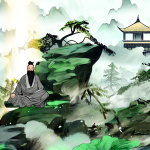
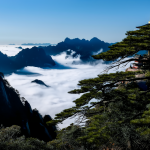
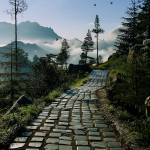
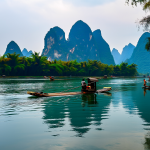
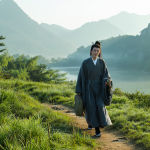
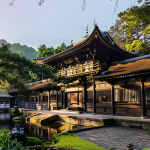
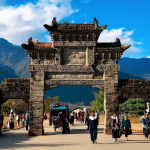
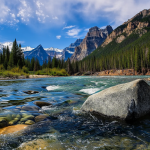
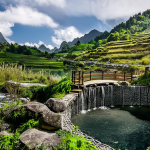
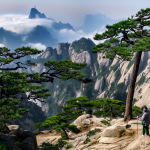
评论功能已关闭。